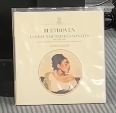[please forgive my poor English]
The Western Electric, great excerpt, thanks.
Through my Sennheiser plugged into my Thinkpad (yes, I know...), I personally like even more the
Beethoven piano sonata featured in the TotalDAC recording, right here
Does someone know the reference of that LP? Thanks.
View attachment 110455
"Joe Roberts did his best to convince audiences that progress in the field of audio reproduction had been less than spectacular by playing a Western Electric 11A theatre horn system from 1924" (Munich High-end 2016,
TheEar report)
I'm still waiting for technological breakthroughs in audio, like two Bose-Einstein condensates acting like two pulsating point-sources in front of me (can we get tickets to access that room in Munich HighEnd, year 2435?).
In the meantime, and as far as I can modestly judge, "technological breakthroughs" mainly occur into
optimizing existing (sometimes old) technologies:
for tweeter: beryllium, diamond-powder proceeded at plasma-temprature, beryllium compression driver, etc
for bass: DSP-corrected cones using accelereometers, Room-EQ correction, etc
But it seems the technology itself they improve, is not always new at all.
Examples:
- present isodynamic ribbon panels are all remotely based on a 1924 Siemens patent (the Blatthaller, Deutche Reichspatent 410114,
ribbon loudspeaker, patented in 1924 by Edwin Gerlach of Siemens & Halske; more
details and pics, in Deutsch)
- so did Alsyvox, Clarisys (patent?), Diptyque, etc.
- 100% beryllium-based compression drivers in this system, custom-designed by Be Yamamura for a happy classical music lover from Italy (
report by Mono&Stereo - I wish I'd been there!).
(Sorry for the digression)


